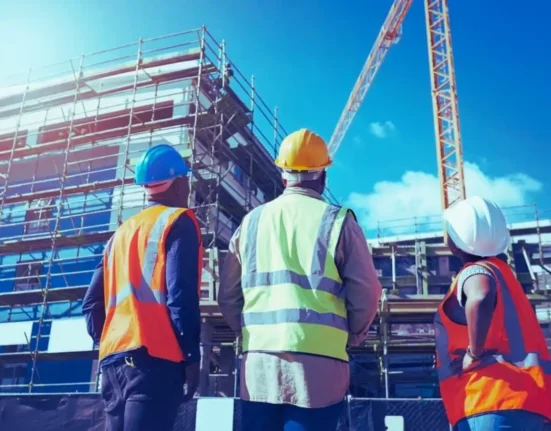How many times have you felt exhausted at the end of a long day at a construction site? Or worse yet, have you ever pushed through fatigue only to face an injury due to overexertion? With the physically demanding nature of construction work, managing fatigue and preventing injuries isn’t just about personal well-being—it’s about ensuring workplace safety and productivity. So, how can construction workers effectively manage fatigue, reduce the risk of injuries, and stay at their best on the job?
The Link Between Fatigue and Injuries in Construction Jobs
Construction jobs are known for their physical demands. From lifting heavy materials to operating large machinery, workers put in long hours performing strenuous tasks. But with this comes a major concern: fatigue. Fatigue is not only mentally draining but also physically taxing, making it one of the leading causes of workplace accidents and injuries in construction.
Construction injuries are preventable, yet they remain prevalent due to a lack of awareness about fatigue management and safety practices. The key question is: How can construction workers stay energized and safe throughout their long shifts? By understanding the effects of fatigue and implementing the right strategies to manage it, workers and employers can significantly reduce the risk of injuries and improve overall site safety.
This article will explore practical tips for managing fatigue, promoting well-being, and preventing injuries in construction jobs. We’ll dive into effective strategies, real-world examples, and expert insights on how to safeguard your health while staying productive and efficient on-site.
The Impact of Fatigue in Construction Jobs: Why It Matters
Fatigue isn’t just about feeling tired—it can have severe consequences in high-risk environments like construction sites. When workers are fatigued, their attention span, decision-making abilities, and coordination suffer. This increases the likelihood of accidents, which can result in serious injuries or fatalities. Let’s take a look at how fatigue impacts workers in construction:
- Decreased Reaction Time: Fatigue can slow your reaction time, making it harder to respond quickly to changing conditions on-site. Whether you’re operating heavy machinery or responding to an emergency, delayed reactions can lead to accidents.
- Impaired Judgment: Tired workers may make poor decisions, overlook safety protocols, or fail to recognize hazards that a well-rested worker would identify.
- Physical Strain: When fatigued, workers are less likely to use proper lifting techniques, which increases the risk of musculoskeletal injuries like strains and sprains.
- Decreased Focus: Long hours can lead to mental fatigue, affecting concentration and awareness, which can result in mistakes or missed warnings.
Given these risks, it’s vital for both workers and employers to understand the importance of fatigue management in reducing workplace injuries. Now, let’s explore the most effective strategies to combat fatigue and improve safety.
Effective Strategies for Managing Fatigue in Construction Jobs
Managing fatigue is about more than just taking breaks. It’s a combination of proper planning, healthy habits, and creating a supportive work environment. Here are some practical strategies for both workers and employers to implement in order to prevent fatigue and improve overall well-being:
1. Prioritize Proper Sleep and Rest
Adequate rest and sleep are the foundation of managing fatigue. Quality sleep helps restore energy levels, improves cognitive function, and enhances physical recovery. Here are some tips for getting better rest:
- Maintain Consistent Sleep Patterns: Aim for 7-9 hours of sleep every night, and try to maintain a consistent sleep schedule.
- Create a Restful Sleep Environment: Minimize distractions, such as noise or light, and ensure your sleeping area is comfortable.
- Avoid Stimulants Before Bed: Limit caffeine and screen time before bed to help your body relax and prepare for sleep.
Tip for Employers: Encourage workers to take scheduled breaks throughout the day to avoid burnout and give them the opportunity to rest and recharge.
2. Implement Regular Breaks and Rotation Shifts
Prolonged physical activity without proper rest increases fatigue and the likelihood of injury. To prevent this:
- Take Regular Breaks: Workers should take short breaks throughout the day to stretch and hydrate. Even a 5-minute break can significantly improve focus and reduce the risk of physical strain.
- Rotate Shifts: If possible, rotate workers through different tasks to minimize repetitive strain and fatigue from overuse of specific muscles.
- Provide Rest Areas: Ensure workers have a designated space to rest during breaks, away from the noise and hustle of the construction site.
Tip for Employers: Set up a schedule for regular breaks that employees must adhere to, ensuring no one is overworking themselves.
3. Hydration and Nutrition Are Key
Hydration is essential for maintaining energy levels throughout the workday. Dehydration can lead to dizziness, fatigue, and impaired performance, increasing the risk of accidents.
- Drink Water Frequently: Encourage workers to drink water throughout the day, especially during hot weather, to stay hydrated and energized.
- Eat Balanced Meals: A nutritious diet can combat fatigue. Ensure workers have access to healthy snacks and meals that provide sustained energy—foods rich in protein, whole grains, and vegetables can help maintain focus and stamina.
Tip for Employers: Provide hydration stations and ensure that healthy food options are available on-site to support workers’ energy needs.
4. Proper Ergonomics and Equipment Use
Ergonomics plays a huge role in preventing physical fatigue. Poor posture, improper lifting techniques, and overexertion can lead to fatigue-related injuries, such as back pain or strains.
- Use Proper Lifting Techniques: Ensure workers are trained in the correct techniques to lift heavy objects, utilizing the legs instead of the back.
- Provide Ergonomic Tools: Invest in ergonomic tools and equipment that reduce the physical strain on workers’ bodies, such as adjustable scaffolding, lifting devices, and tools designed for comfort and ease of use.
- Provide Safety Gear: Ensure workers have access to the proper protective equipment (PPE) such as gloves, helmets, and boots to prevent injuries that could exacerbate fatigue.
Tip for Employers: Provide training on proper ergonomics and encourage the use of safety equipment to minimize unnecessary physical strain.
5. Monitor Mental Health and Well-being
Construction workers face both physical and mental challenges, and mental fatigue can be just as harmful as physical exhaustion. High-stress levels, anxiety, and poor mental health can all contribute to fatigue.
- Encourage Open Communication: Create a culture where workers feel comfortable discussing mental health issues and fatigue.
- Offer Mental Health Support: Provide access to counseling services, support groups, and stress-relief activities such as mindfulness or relaxation workshops.
- Promote a Positive Work Environment: Foster a supportive, collaborative atmosphere where workers can express concerns and feel valued.
Tip for Employers: Develop programs to promote mental wellness, such as stress management workshops or regular check-ins to discuss workload and well-being.
Injury Prevention: How to Safeguard Workers’ Health
Preventing injuries in construction goes hand-in-hand with managing fatigue. Implementing the following measures can reduce the likelihood of injuries and promote a safer working environment:
- Safety Inspections and Hazard Assessments
Regular safety inspections and hazard assessments are essential for identifying and mitigating risks before they lead to accidents.
- Conduct Regular Site Inspections: Ensure that all equipment is in good working condition, walkways are clear, and safety protocols are being followed.
- Risk Assessments: Before beginning any project, conduct a thorough risk assessment to identify potential hazards and establish measures to prevent accidents.
- Train Workers in Safety Protocols
Proper safety training is crucial in preventing accidents on the job site. Ensure that all workers are educated on safety practices and emergency procedures.
- Regular Safety Training: Provide workers with regular training on how to use equipment safely, recognize hazards, and report unsafe conditions.
- Emergency Procedures: Ensure workers know how to respond in case of an accident or emergency.
- Encourage the Use of Personal Protective Equipment (PPE)
Personal Protective Equipment (PPE) is essential for preventing injuries. Make sure all workers are equipped with the necessary safety gear for the job, including hard hats, gloves, safety boots, and high-visibility clothing.
A Healthier, Safer Construction Site Starts with You
Managing fatigue and preventing injuries in construction jobs is essential for both personal well-being and workplace safety. By prioritizing rest, hydration, ergonomics, mental health, and regular breaks, construction workers can stay energized and productive while minimizing the risk of accidents. Employers also play a crucial role in creating a safe and supportive work environment, ensuring workers have access to the tools, training, and resources they need to succeed.
Remember, safety is not a one-time effort; it’s a continuous process. Implement these strategies on your next job site to protect yourself and your team, ensuring a safer and more efficient construction environment for everyone involved.
Read more articles at Trivardepci.com












Leave feedback about this